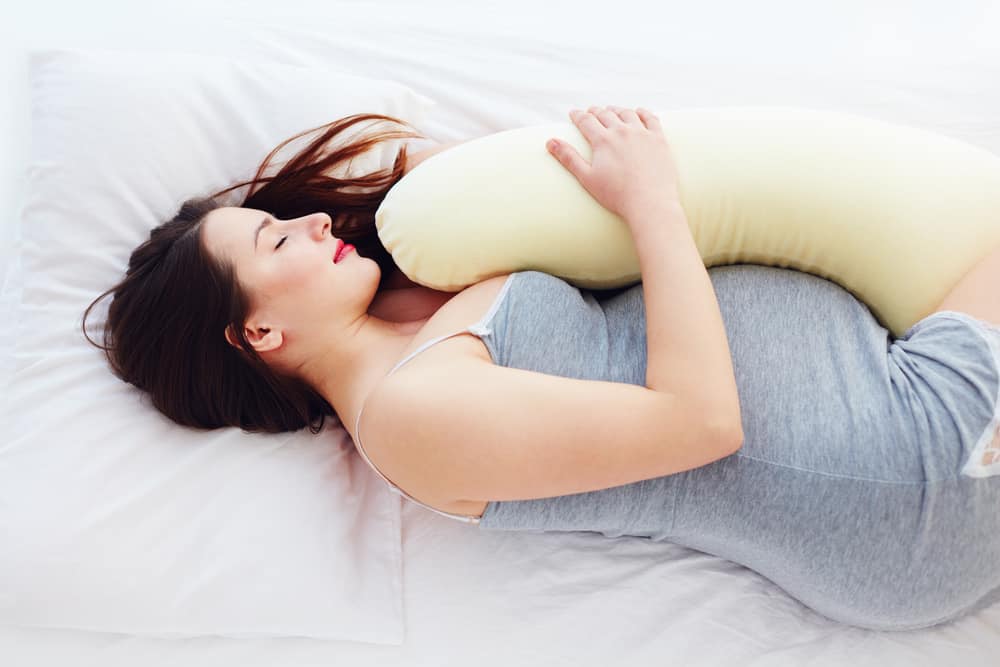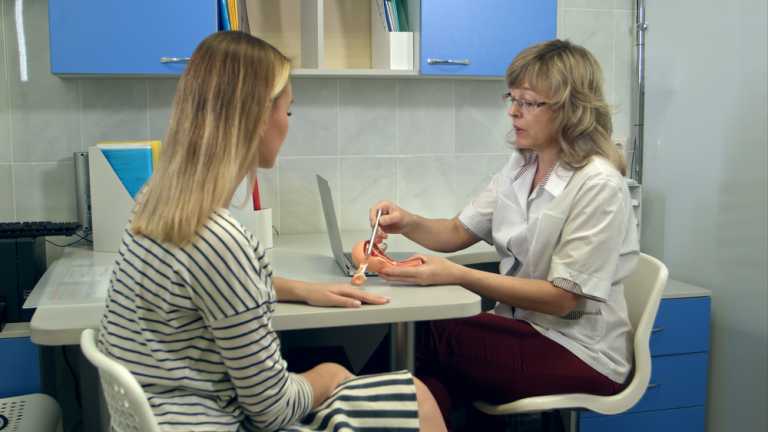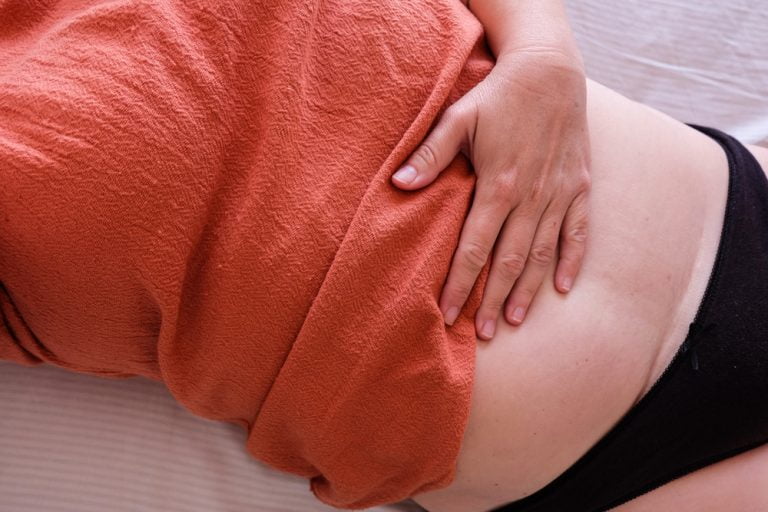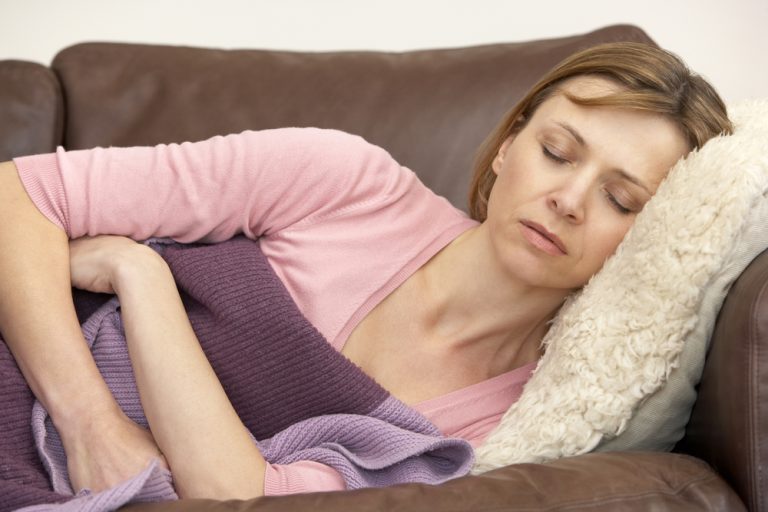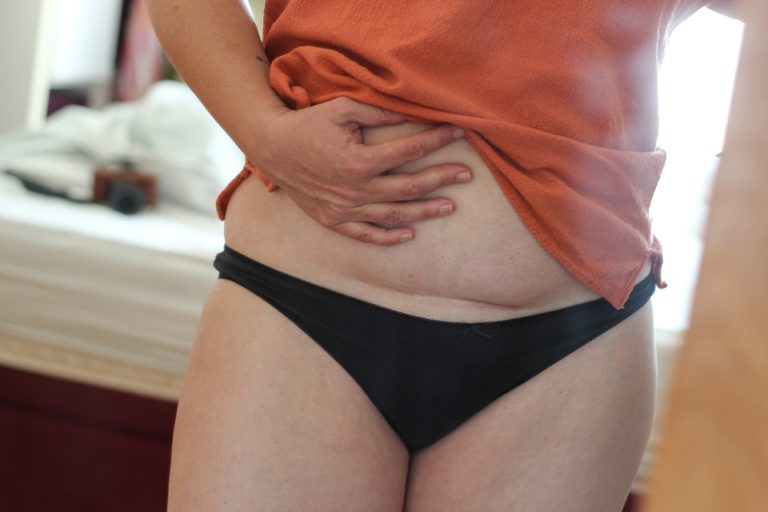Everyone tells you to “sleep when the baby sleeps.” But there’s never much advice about how to sleep after a c-section. With a sore belly and an incision to worry about, it’s not as simple as just getting your head down.
Fortunately, thanks to the wisdom of the 30% of moms who’ve delivered via cesarean section, it’s not as tricky as you might think. Here’s how to sleep comfortably and safely:
How to Sleep After a Cesarean Section
To get the best sleep after your cesarean section, you need to:
- Find a good sleeping position.
- Use a pregnancy pillow.
- Sleep in darkness.
- Manage your pain.
- Maintain a comfortable room temperature.
- Keep your baby within reach – If you’re in charge of night feeds.
- Get support from a partner, friend, or family member.
- Avoid caffeine after noon.
- Optional – take sleeping medication.
Here’s how to achieve each one:
The Best Sleep Positions for a C-Section Recovery
- On Your Back – If You Have Normal Blood Pressure
Most women and the Speciality Surgical Centre recommend sleeping on your back with a pillow under your knees. This is a great option as it won’t put any pressure on your incision so that you can sleep safely.
However, if you have any issues with your blood pressure, your doctor may advise you to avoid this position.
If you do sleep on your back, take care when getting out of bed to avoid straining your incision. Instead of sitting straight up, roll onto your side and push yourself up with your arms.
- Propped Up
In the first few days, you may find it more comfortable to sleep propped up in bed as if you were sitting. To do this, pile your pillows behind your back until you reach a comfortable height.
- In a Recliner
Sleeping in a recliner might also work if you feel more comfortable propped up.
- On Your Side
It’s safe to sleep on your side after a c-section as long as it doesn’t cause you any pain. Your left side is best, as it promotes healthy blood flow.
Try popping a pillow between your knees if it doesn’t feel right. This can help align your pelvis and spine.
Sleep Position to Avoid After a C-Section
- On Your Stomach
The only position to avoid is sleeping on your front. It could irritate or put pressure on your incision. Fortunately, after about 6 weeks, you can return to sleeping however you like.
Pregnancy Pillow
Maternity or body pillows aren’t just for use when you’re pregnant. They’re also great for c-section recovery.
Depending on the style, they can prevent you from rolling onto your stomach, support you while sleeping on your back, or make lying on your side comfier.
Sleep in the Dark
Use blackout blinds to block out any natural or unnatural light at night. Also, try to avoid artificial light sources from screens near bedtime.
This one’s not just great for you; it’ll also support your baby in developing their sleep rhythm.
Pain Management
If you have a prescription for pain medication, make sure you take a dose just before bed to get the best sleep.
If you’ve been taking medication and the pain keeps you awake or worsens, contact your doctor immediately. It could be a warning sign of infection or an open incision.
Room Temperature
There’s a lot of discussion about the best temperature for sleeping. But between 50-71°F or 16-22°C is generally considered comfortable for you and safe for your baby.
Keeping Your Baby Within Reach
If you’re in charge of night feeds, ensure you can access your baby without straining your incision. This will reduce your pain and make it easier to get back to sleep.
A bedside bassinet with a collapsible side is great, as it’ll allow you to slide your baby towards you.
Support From a Partner, Friend, or Family Member
Don’t be afraid to ask for help. You need as much rest as possible to recover quickly.
If you can, find someone who can take the nighttime feeding shift. Ask them to pass you the baby if breastfeeding or tackle the diaper changes.
Avoid Caffeine After Noon
Using caffeine to get you over the mid-afternoon slump can be tempting, but it’s not worth it. It’ll disrupt your sleep later, and you’ll get stuck in a cycle of exhaustion. Plus, it’ll contribute to swollen post-c-section feet.
Instead, try a quick 15-20 minute nap while someone else takes care of your baby.
Optional – Sleeping Medications
If you’re struggling to sleep, your doctor may be able to prescribe medication to help. But, if you’re breastfeeding, your options will be limited as you could pass the medicine to your baby.
Why Can’t I Sleep After a C-Section?
If you’ve tried everything, you’re not in pain, and you still can’t sleep, you may have postpartum insomnia. Rapid changes in hormone levels, stress, or restless leg syndrome usually cause this.
Fortunately, it should start to ease around when your baby begins to sleep through the night. Taking naps, avoiding caffeine, meditation, and cognitive behavioral therapy can also help.
If your insomnia persists for longer than a few months, consult your doctor and devise a treatment plan.
FAQs
Yes, you can sleep lying down after your cesarean, as long as it’s comfortable. But, If you feel any pulling or pain at your incision, you may need to sleep propped up for the first few days.
After your c-section, you can sleep in any position you find comfortable. For most women, this is on their backs or side. The only position to avoid is lying on your stomach, as it’ll put too much pressure on your incision.
You should be able to sleep on your stomach 6 weeks after your c-section. But if you’ve had an infection or complication, you’ll have to wait until your incision heals fully.
Sleeping on your left side after a c-section is best. This is because it improves blood flow, opens your airways, and reduces pressure on your liver.
